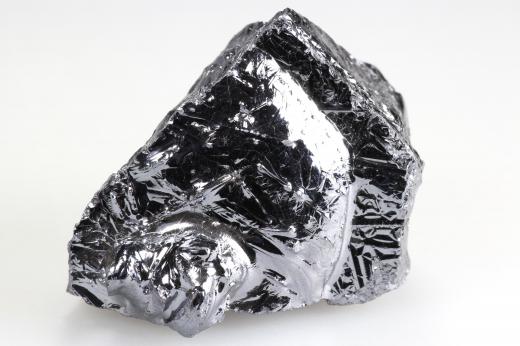At EasyTechJunkie, we're committed to delivering accurate, trustworthy information. Our expert-authored content is rigorously fact-checked and sourced from credible authorities. Discover how we uphold the highest standards in providing you with reliable knowledge.
What is a Positive Anode?
A positive anode is part of an electric device where current flows into the electric system. The electrode is said to be positive when present in an electrolytic cell, or charging battery, because it supplies electrons to the system, leaving behind positive cations. Anodes can be formed from many materials, ranging from traditional zinc and copper to more recent carbon, graphite, and silicon.
Although a positive anode is most commonly conceived as the stereotypical anode, anodes can be either positive or negative, depending on the type of system. For example, galvanic cells, or discharging batteries, feature negative anodes and positive cathodes. Positive and negative charges are independent of an anode’s true definition, which is the source of current into the system.

Electrolytic cells and charging batteries are often used as examples when describing a positive anode. In these devices, the anode is the electrode that cations move away from and that anions move toward, in part because of its positive charge. A positive anode in an electrolytic cell is structured similarly to a negative anode in a galvanic cell, as each basic cell features two metals in separate electrolyte ion solutions. The two half-cells are connected by a salt bridge or ion-permeable membrane.
The electrolytic cell is designed to convert electrical energy into chemical energy. When the anode is ionized, it creates electrons that flow to the cathode and also produces cations that dissolve into the electrolyte solution. On the opposite end, the cathode binds the electrons created at the positive anode to the cations in the electrolyte solution. These form whole atoms that deposit on the cathode, creating chemical energy.
As the atoms in the anode split, they are said to be oxidized. In electrochemistry, this oxidation process always occurs at the anode, but in other processes, it could occur at the cathode. Cathode ray tubes, for example, also feature a positive anode, but the anode is charged so that it can accept electrons rather than give off electrons.
Other technologies make use of the positive anode as well, including metal refining. During these processes, the anode metal is electrolyzed to form electrons and dissolved metal cations in a typical electrolytic process. The dissolved cations then move through the solution to the cathode, where they are reharvested as a solid product. Processes involving this technology can achieve high purity metals at the cathode, with a purity of up to 99.99%.
AS FEATURED ON:
AS FEATURED ON:











Discuss this Article
Post your comments